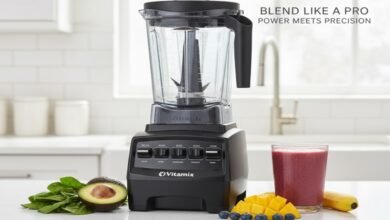AI-Powered Smart Glasses: The Future of Wearable Tech in 2025
Wearables are no longer limited to smartwatches and fitness trackers. In 2025, the spotlight has shifted toward AI-powered smart glasses, merging fashion with futuristic functionality. From real-time translations to hands-free navigation, these glasses promise to make everyday life smoother — all while looking stylish enough to wear outside of a tech convention.
But do they truly live up to the hype? Let’s explore the features, benefits, and comparisons between some of the leading players in this growing category.
👓 What Are AI-Powered Smart Glasses?
AI smart glasses are eyewear embedded with cameras, microphones, sensors, and AI-driven software. Unlike older versions of “smart glasses” that mainly displayed notifications, the new generation integrates AI assistants capable of:
- Real-time language translation
- Visual recognition (landmarks, text, objects)
- Health and fitness tracking
- AR (augmented reality) overlays
- Hands-free video and photo capturing
- Voice-controlled productivity features
In short, they aim to replace some of the tasks you rely on your smartphone for — without needing to glance at a screen.
🌟 Why They’re Trending Now
- AI Boom: With AI assistants becoming smarter, glasses are the perfect hardware to integrate them seamlessly.
- Hands-Free Lifestyle: Professionals, travelers, and even gamers want tools that let them stay connected without constant phone use.
- Fashion x Tech: Collaborations with brands like Ray-Ban, Prada, and Bose make these glasses stylish, not geeky.
- Accessibility: Real-time captions and audio assist features make them game-changers for people with hearing or visual challenges.
🔍 Popular AI Smart Glasses in 2025
1. Meta Ray-Ban Smart Glasses (3rd Gen)
These are among the most hyped models. They feature Meta AI integration, improved camera quality, and music streaming through built-in speakers. Ideal for social media lovers and everyday use.
2. Xreal Air 2 Ultra
Focused more on AR, these lightweight glasses project virtual screens for work and play. They’re a hit among remote workers and gamers who want a portable multi-screen setup.
3. Solos AirGo Vision
Targeted at productivity, Solos uses AI to provide real-time transcription, fitness tracking, and even coaching feedback during workouts.
👉 Verdict:
- For creators → Meta Ray-Ban
- For productivity → Solos AirGo Vision
- For immersive AR → Xreal Air 2 Ultra
⚖️ Benefits vs. Limitations
✅ Benefits
- Discreet AI Assistant: No more looking down at your phone — information appears in your line of sight or through audio.
- Enhanced Connectivity: Take calls, control music, or stream content hands-free.
- Travel-Friendly: Real-time translation and navigation features make them a traveler’s dream.
- Accessibility Boost: AI-generated captions and audio cues help those with disabilities.
❌ Limitations
- Battery Life: Most models only last 4–6 hours of heavy use.
- Privacy Concerns: Built-in cameras raise issues about recording in public.
- Cost: Prices range from $299 to over $1,000, making them a premium gadget.
- Learning Curve: Not everyone adapts quickly to AR or voice-only interfaces.
📈 The 2025 Smart Glasses Trend
AI wearables align with the “post-smartphone era” — where users want seamless, less-distracting tech. The push toward augmented reality (AR) and AI-driven personalization ensures that smart glasses are not just a novelty, but a long-term trend.
Expect upcoming innovations like:
- Prescription-ready lenses for broader adoption
- Longer-lasting batteries using solar or kinetic charging
- Smarter AI integrations that anticipate user needs
🛒 Where to Buy & Subscriptions
- Meta Ray-Ban Smart Glasses → Starts at $299, available with optional Meta AI subscription for added features.
- Xreal Air 2 Ultra → Around $449, with premium AR workspace subscriptions.
- Solos Smart Glasses → Fitness + productivity-focused subscriptions available.
Many brands now offer subscription bundles, combining hardware with ongoing AI service updates — ensuring you always have the latest features.
✅ Final Verdict
AI-powered smart glasses are no longer futuristic concepts — they’re practical, stylish, and increasingly accessible. While they still face challenges like short battery life and privacy debates, their potential to transform how we work, travel, and communicate is undeniable.
If you want an everyday wearable with AI flair, start with Meta Ray-Ban Smart Glasses for their seamless integration and trendy design. For professionals or gamers, Xreal and Solos offer specialized experiences.
✨ Bottom line: In 2025, AI smart glasses aren’t just about looking futuristic — they’re about living smarter.



